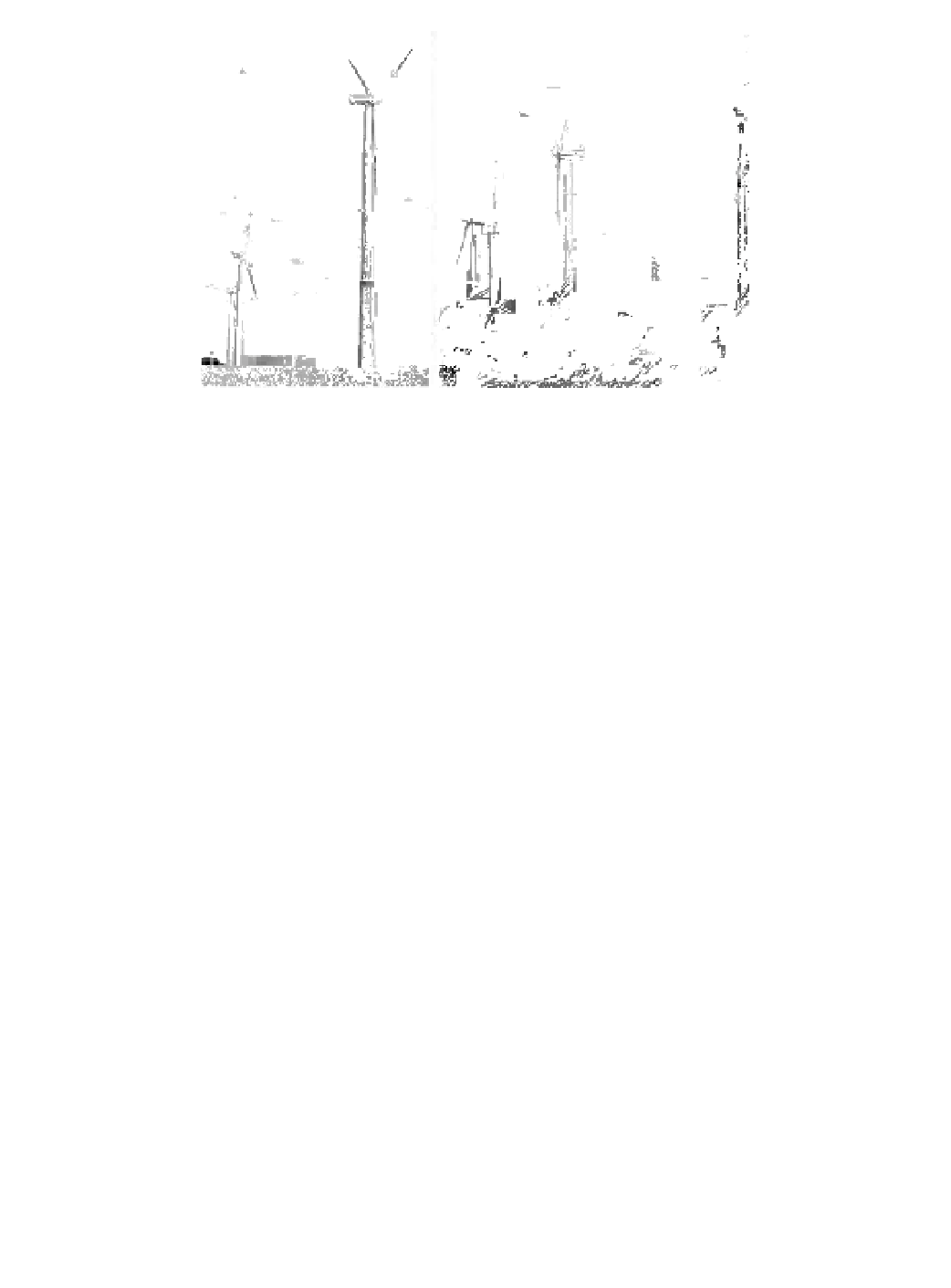Environmental Engineering Reference
In-Depth Information
Figure 18.21
Various large-scale megawatt machines undergoing tests at
the Grevenbroich test site, 2010 (left); The test site of the
German Wind Energy Institute (DEWI), near Wilhelmshaven,
1999. Various machines, from left to right: AN Bonus 2 MW,
Nordwind 750 kW, Vestas 1.65 MW, HSW 30 kW (right)
(Photo: Arne Jaeger).
Another aspect, typically associated with the German industry,
is innovation. Many technical trends were set in Germany. Hütter's
wind turbine W-34 of the 1950s might reach back a very long time,
but represents the first trend. His concept often inspired
manufacturers from all around the world, for example, American
companies like Carter or ESI.
A typical innovative company was and still is Enercon. When
the E-40 was commercialised in 1993, the ring generator concept
clearly revolutionised both technological development and the
market. Though wind turbines with a ring generator were nothing
new, the company managed to produce such machines serially.
More than 10 000 Enercon machines have been set up globally.
There were more firms trying to succeed with a ring generator.
In 1999, a company called Genesys erected a 600 kW machine
in southwestern Germany. However, the turbine remained a
prototype. In the more recent years, Vensys built a 1.5 MW
turbine with a ring generator, of which a prototype was set up at
Grevenbroich.
1
This new design proved very convincing to Chinese
1
For more information see chapter
Direct Drive Wind Turbines
by Friedrich
Kling
er.


Search WWH ::

Custom Search